Key takeaways
- Success on Twitter Ads relies on precise targeting and crafting messages that resonate with users in a conversational tone.
- Real-time performance analysis allows for quick adjustments, enhancing engagement and budget management.
- Aligning campaign objectives, audience, and content with Twitter’s dynamic environment is crucial for achieving meaningful results.
- Patience and experimentation can lead to significant improvements, highlighting the importance of flexibility in digital marketing strategies.
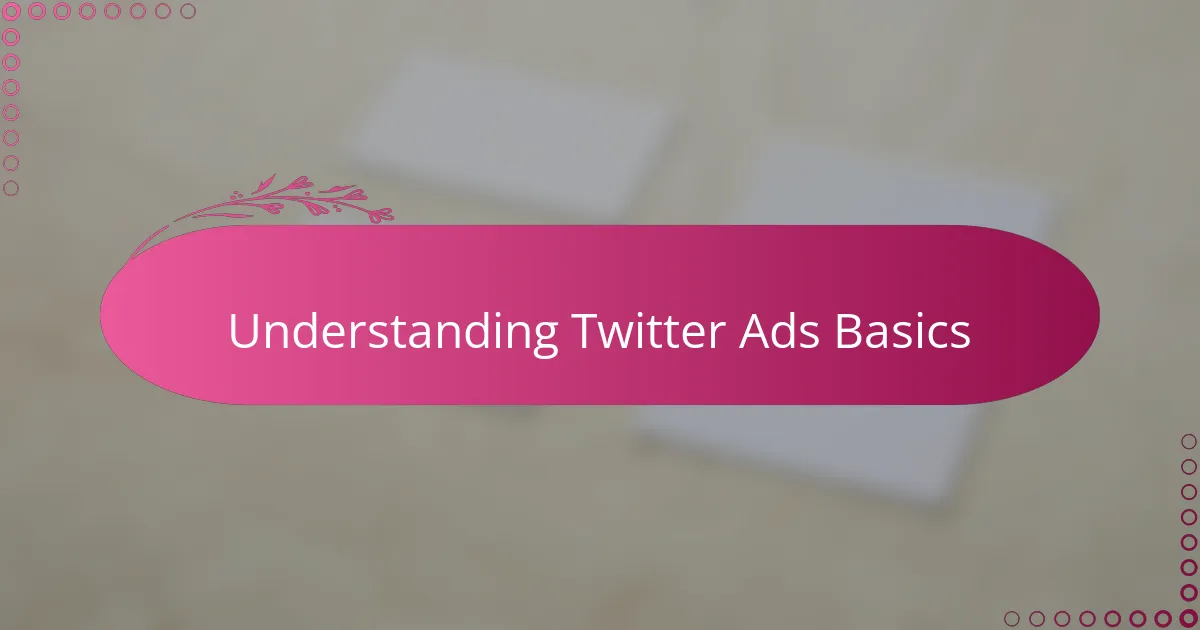
Understanding Twitter Ads Basics
Getting started with Twitter Ads felt a bit overwhelming at first—I wasn’t sure how to make the most of the platform’s unique format. But once I grasped the basics, like the importance of targeting specific audiences and choosing the right ad objectives, things started clicking. Have you ever wondered why some ads just seem to resonate while others fall flat? On Twitter, it’s all about precision and relevance.
One key insight I learned early on is that Twitter Ads revolve around short, sharp messages that feel native to the feed. Unlike traditional ads, they blend into conversations, making it tricky but rewarding when done right. The platform offers options like promoted tweets, accounts, and trends, each serving a different marketing goal—knowing which one fits your needs can change the game.
What really helped me was experimenting with Twitter’s targeting tools. You can zero in on demographics, interests, even specific keywords people use in their tweets. This level of control made me realize that Twitter Ads aren’t just about shouting louder; they’re about speaking directly to the right ears at the right time. That’s a powerful lesson for any marketer.

Setting Up a Twitter Ad Campaign
Setting up a Twitter ad campaign felt like assembling a puzzle without the picture on the box. I remember staring at the campaign creation page, trying to decide whether to focus on awareness, engagement, or conversions. It’s easy to get caught up in the options, but I soon found that aligning the campaign objective with my specific goal helped cut through the noise.
I started by choosing my audience with care, using Twitter’s targeting options to hone in on people who genuinely mattered to my brand. At first, the sheer number of settings—location, interests, behaviors—was a bit overwhelming, but as I tweaked these parameters, I noticed the impressions felt much more meaningful. Have you ever felt like you’re talking into a void? Twitter’s targeting helped me break through that silence.
Once the basics were in place, I focused on crafting the ad content itself. Writing tweets that fit naturally within a user’s timeline was both challenging and rewarding. It made me realize that less is often more on Twitter—short, catchy messages with clear calls to action worked best. This process taught me that setting up a campaign isn’t just about configuring options; it’s about understanding the platform’s heartbeat and syncing with it.
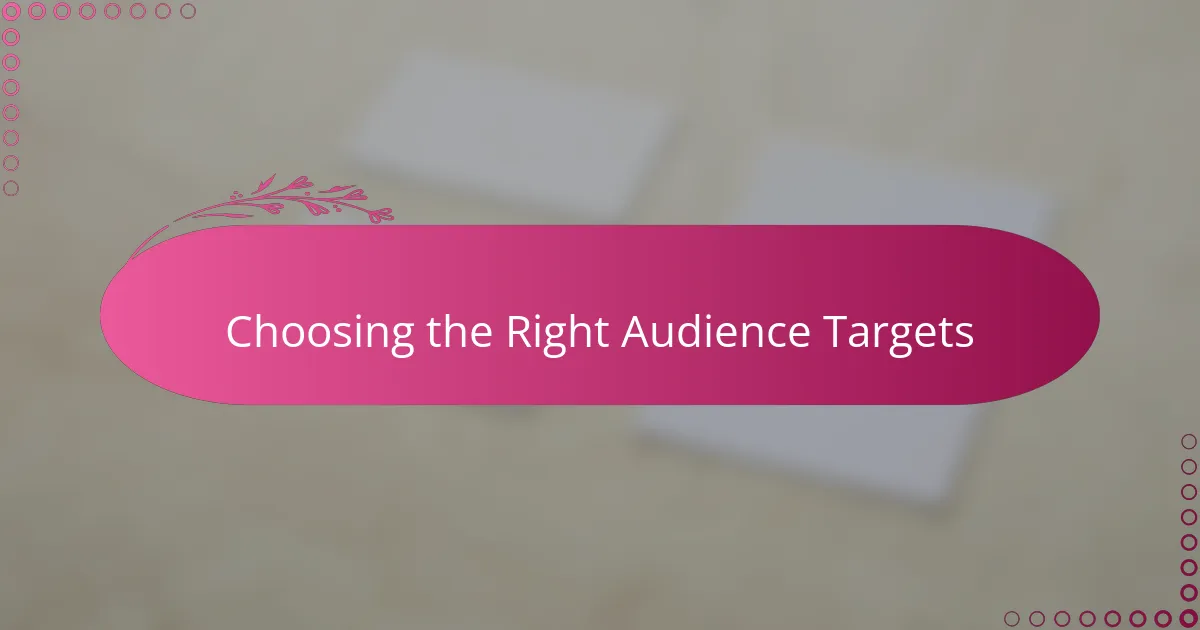
Choosing the Right Audience Targets
Choosing the right audience targets felt like trying to find a needle in a haystack initially. I asked myself, “Who exactly am I trying to reach here?” Once I started narrowing down by interests and behaviors, it was like flipping a switch—suddenly, my ads were speaking directly to people who actually cared.
What surprised me most was how much location and device targeting influenced results. I hadn’t expected choosing users on mobile vs. desktop to make such a difference, but it did. It made me realize that knowing where and how your audience consumes content is just as important as who they are.
Have you ever wasted ad spend on broad targeting and wondered why engagement was low? I sure have. Twitter’s layered targeting options helped me escape that trap by letting me experiment with very specific niches, making every impression count. It felt less like throwing darts blindfolded and more like a tailored conversation.
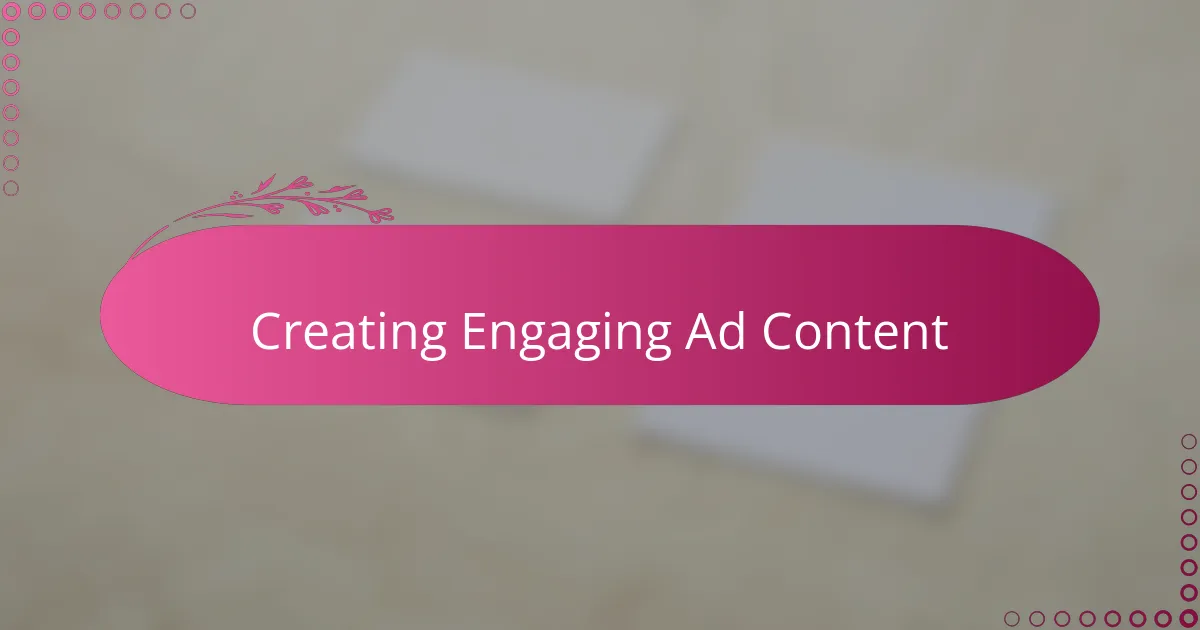
Creating Engaging Ad Content
Creating ad content that truly engages felt like an art form I needed to master on Twitter. I quickly realized that simply pushing out flashy graphics or long copy didn’t cut it; the real magic was in crafting messages that felt like they belonged right in the stream of conversations. Have you noticed how tweets with authentic, concise wording tend to get more clicks and retweets? That’s because people want to feel like the ad speaks directly to them, not at them.
One time, I tried an ad with a straightforward call to action paired with a question that triggered curiosity—it was incredible how much more engagement it generated compared to my previous, more generic posts. It made me appreciate the power of storytelling, even in 280 characters or less. The trick, as I found, was using language that invited interaction rather than just broadcasting a sales pitch.
Visuals also played a silent but crucial role in my ads. I experimented with images and short videos that complemented my tweets without overpowering them. When I matched the tone and style of my visuals to the audience’s interests, it felt like the whole ad came alive. Isn’t it fascinating how a well-chosen image can change the entire vibe of a tweet and make it impossible to scroll past?
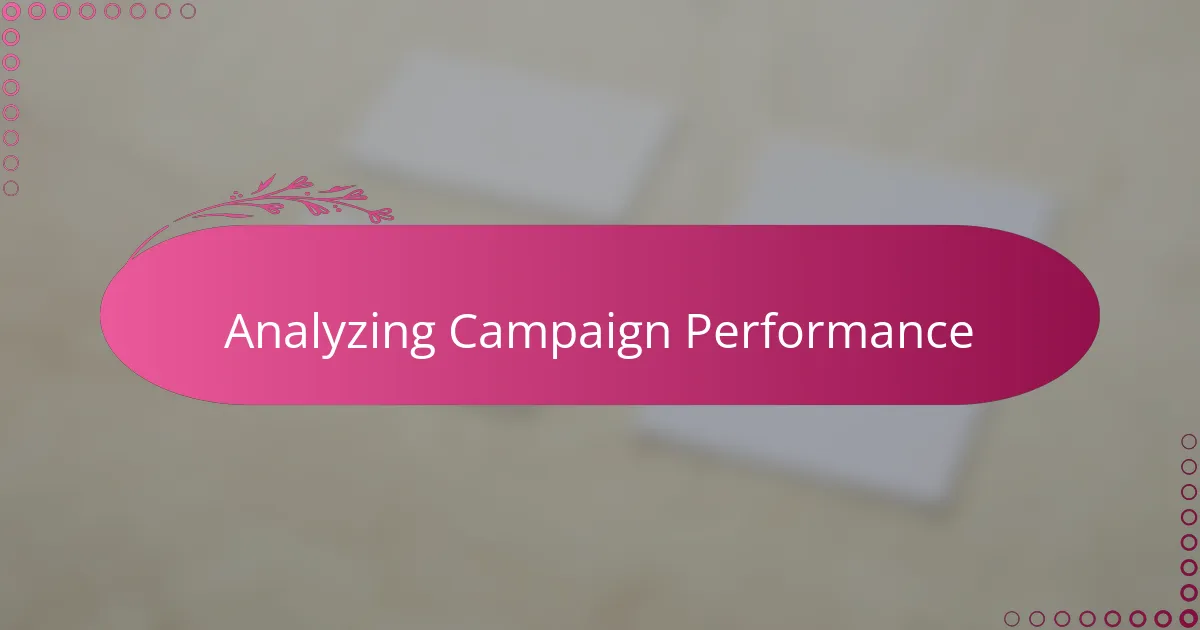
Analyzing Campaign Performance
Analyzing campaign performance on Twitter started as a bit of a puzzle for me. I found myself constantly checking metrics like engagement rates and click-throughs, trying to decode what those numbers really meant for my goals. Have you ever stared at a dashboard wondering if what you see signals success or if there’s more beneath the surface? For me, it became clear that raw numbers only tell part of the story—they need context to make sense.
One thing I noticed was how real-time feedback on Twitter allowed me to pivot quickly. If an ad wasn’t getting traction, I didn’t have to wait days to make changes; I could test tweaks immediately and watch how the performance shifted. That immediacy made me feel less stuck and more in control, which, honestly, reduced a lot of the anxiety around investing budget in ads.
Beyond the usual metrics, I started diving into qualitative signals, like the type of comments and the quality of interactions. It wasn’t just about counting clicks but understanding who was engaging and why. This approach gave me a richer picture of what was working—which made the process feel less like guesswork and more like a conversation with my audience. Have you tried looking beyond the numbers to really listen to what people’s reactions reveal? It’s a game-changer.
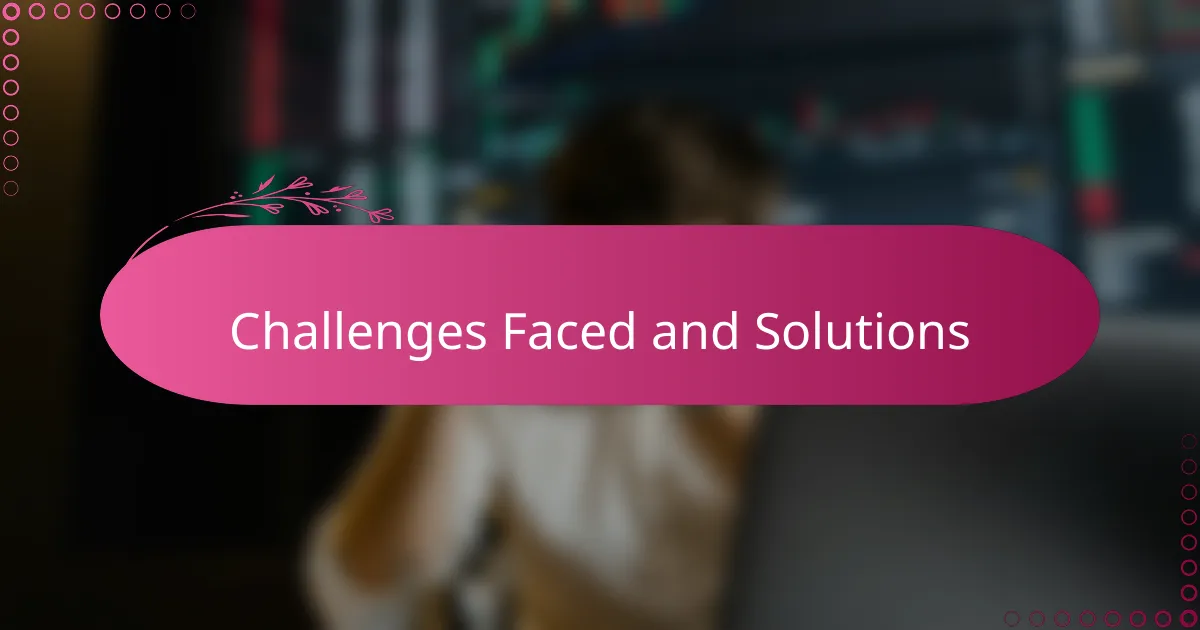
Challenges Faced and Solutions
One of the biggest challenges I faced was navigating Twitter’s ever-changing ad policies. I remember crafting what I thought was a perfect campaign, only to have it flagged or rejected unexpectedly. It felt frustrating, like running into a wall without a map. But over time, I learned to stay updated and adapt my content quickly, which turned compliance from a headache into a natural step in the process.
Budget management was another tricky area. Initially, I threw in ad spend without a clear sense of pacing, leading to quick burnouts and inconsistent results. Have you ever felt that sinking disappointment when your dollars just disappear without impact? What helped me was setting daily limits and closely monitoring spend against performance, allowing me to allocate resources smarter and sustain campaigns longer.
Finally, measuring true ROI on Twitter ads wasn’t straightforward. The platform’s metrics can be overwhelming, and I often questioned what numbers really mattered. I found that mixing quantitative data with a gut check on audience feedback made all the difference. When I combined analytics with listening to user comments, I could pivot strategies more effectively and avoid costly blind spots. It taught me that data alone isn’t enough—you have to read between the lines.
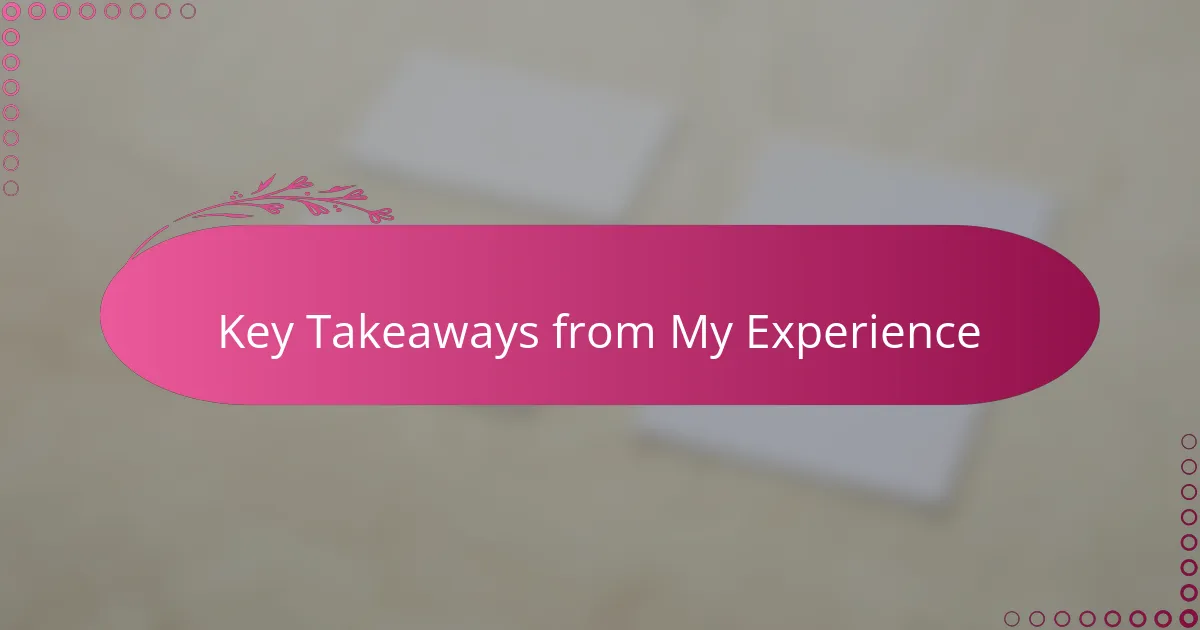
Key Takeaways from My Experience
When I reflect on my time using Twitter’s ad platform, what stands out most is how critical it is to be patient and willing to experiment. Have you ever felt frustrated when an ad just doesn’t perform as expected? I sure have, but those moments taught me that small adjustments in targeting or messaging can lead to surprisingly big improvements. Twitter’s unique environment rewards flexibility and a willingness to learn from each campaign.
Another key lesson was the sheer value of aligning every element—objectives, audience, content—with the platform’s fast-paced, conversational nature. It’s easy to fall into the trap of treating Twitter ads like traditional ads, but that approach rarely works. Crafting messages that feel native to the feed and speaking directly to specific users made all the difference for me. It showed me that success on Twitter isn’t about shouting louder—it’s about joining the right conversations in the right way.
Finally, the ability to track and interpret engagement in real-time was a game-changer that I didn’t initially anticipate. I remember the relief of knowing I could tweak a campaign mid-flight instead of waiting until the end to find out it missed the mark. Have you experienced that pressure of watching your budget tick down with little to show? Using Twitter’s data live transformed that stress into opportunity. It reminded me that in digital marketing, agility isn’t just an asset—it’s essential.